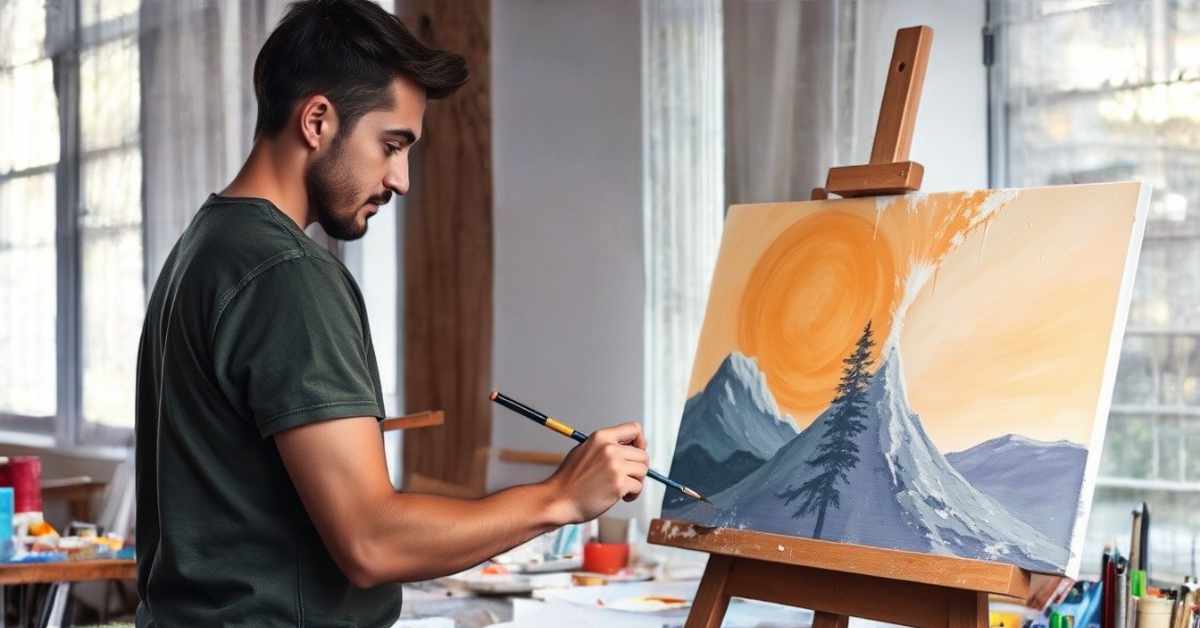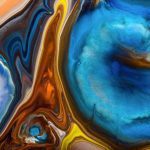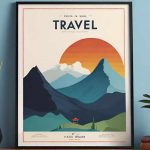Beginner Art and Design: Tips and Tricks to get You Started!

Embarking on a journey in art and design is like stepping into a world full of colours, textures, and endless possibilities. Whether you’re diving into the world of digital art, picking up a paintbrush, or experimenting with graphic design, the first steps can feel daunting. But remember, every artist and designer started right where you are now—uncertain, excited, and ready to create.
The path to becoming a great artist or designer is a constant learning process. It is as rewarding as it is challenging, and the most important part is to start and keep going, simply for the love of creating. Here are some tips and tricks to help you get started and stay motivated, no matter where you are on your creative journey.
1. Start Simple: Embrace the Basics
When you’re starting, it’s easy to get overwhelmed by all the advanced techniques and tools out there. Start simple. Focus on mastering the basics—understanding shapes, light and shadow, colour theory, and composition. These foundational elements are crucial in both traditional and digital art and design. Remember, even the most complex artworks are built upon simple shapes and concepts.
Tip: Practice sketching simple objects around you. This helps build an understanding of form and light, which is the backbone of both art and design. If you’re into digital design, start by recreating these objects using simple vector shapes in software like Adobe Illustrator or Affinity Designer.
2. Play with Different Mediums and Tools
One of the joys of being a beginner is the freedom to experiment without the pressure of being an expert. Try your hand at different mediums—pencil, charcoal, watercolors, acrylics, or digital tools like Procreate or Photoshop. Each medium has its unique qualities and challenges that can help you discover your style and preferences.
Trick: Combine traditional and digital techniques. For instance, start a sketch on paper, then scan it and continue working digitally. This hybrid approach can help bridge the gap between traditional and digital methods, giving you the best of both worlds.
3. Don't Be Afraid to Make Mistakes
Mistakes are part of the creative process. They are opportunities to learn and grow. Often, what feels like a “mistake” can lead to unexpected and exciting results. Allow yourself to explore without the fear of failure. Every mistake you make is a step forward in understanding your craft.
Tip: Set aside a sketchbook or digital canvas specifically for “ugly” art. Let this be a space where you can experiment without judgment. Over time, you’ll see how these “mistakes” contribute to your development as an artist or designer.
4. Find Inspiration Everywhere
Look around you—art and design are everywhere! From the intricate patterns on a leaf to the layout of a well-designed magazine, inspiration can come from the most unexpected places. Keep an eye out for colour combinations, textures, and compositions that catch your attention.
Trick: Create an “inspiration board,” either physically with cut-outs and clippings or digitally with apps like Pinterest or Milanote. Regularly update it with anything that catches your eye. This practice will help you develop a keen eye for design elements and ideas that resonate with you.
5. Learn from Others but Stay True to Yourself
There is an abundance of tutorials, courses, and workshops available online. Learn from them, but don’t feel pressured to copy another artist’s or designer’s style. It’s essential to build your unique voice and style over time.
Tip: Follow a tutorial or recreate a piece of work you admire, but then try putting your spin on it. How would you interpret that landscape? What colours would you use? This will help you learn new techniques while encouraging creative thinking.
6. Practice, Patience, and Perseverance
Becoming skilled in art and design takes time. It’s a marathon, not a sprint. Some days will feel more productive than others, and that’s okay. The key is to keep going, even when things get tough.
Trick: Set small, manageable goals, such as “sketch for 10 minutes a day” or “create one new design each week.” Small goals are less intimidating and easier to stick to, and they add up to significant progress over time.
7. Join a Creative Community
The journey of an artist or designer can sometimes feel solitary. Joining a community, whether online or in-person, can provide support, feedback, and encouragement. Platforms like DeviantArt, Behance, Dribbble, and various art and design forums are excellent places to connect with like-minded creatives.
Tip: Don’t be shy to share your work and ask for constructive feedback. Remember, every artist and designer started as a beginner, and most are more than happy to offer advice and encouragement.
8. Keep Your Mind Open to Cross-Disciplinary Learning
Art and design often overlap, and techniques from one can greatly benefit the other. For instance, understanding typography and layout can enhance your paintings’ or illustrations’ storytelling, just as mastering colour theory can help create more compelling designs.
Trick: Take a course or workshop outside your primary area of interest. If you’re a painter, try a class on graphic design; if you’re a digital artist, dabble in pottery or sculpture. These experiences will add depth to your skill set and enrich your creative perspective.
Final Thoughts: Keep Creating!
Remember, art and design are not just about creating something visually appealing; they’re about expressing yourself and telling a story. Whether you choose to create digitally, traditionally, or a mix of both, the most important thing is to start, stay curious, and keep creating. Your journey is unique, and each piece you create is a stepping stone to discovering more about yourself as an artist or designer. So pick up that pencil, brush, or stylus, and let your creativity flow!






0 Comments